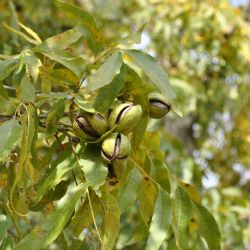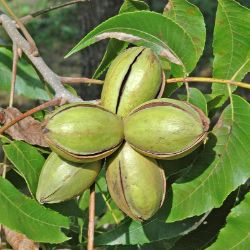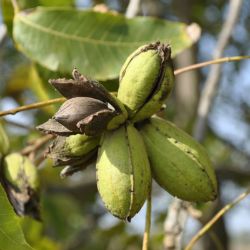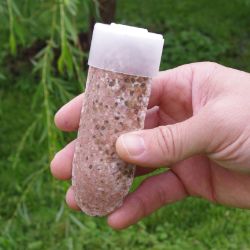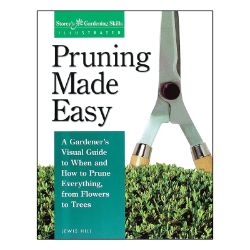Planting Pecan Trees
Successfully establishing a young nut tree in your yard starts with your planting site and method. Once a tree is established, it needs little assistance to grow and produce; but you’ll want to make sure you give your tree the best foundation possible.
Nut trees require fertile soil for good growth, so before you plant, check your soil nutrients and pH. Contact your local County Extension Office for information about soil testing in your area, or purchase one of our digital meters for quick and accurate results. Take a soil sample to determine any additional lime and fertilizer needs. Lime is not generally recommended for pecan trees when the soil pH is above 6. A very high pH is more likely to cause problems with mineral uptake than a low pH.
NOTE: This is part 4 in a series of 11 articles. For a complete background on how to grow pecan trees, we recommend starting from the beginning.
Planting
- Space your pecan trees 40’ to 70’ apart.
- Dig a hole wide and deep enough to accommodate the root system.
- Wet the roots thoroughly before planting.
- Many nut trees have just one main root, almost like a giant skinny carrot. This is called the taproot.
- The taproot of a seedling pecan tree should be pruned before planting. Prune this root back by one-third to one-half. If your tree is potted, no root pruning is required.
- Spread the roots out in the hole to prevent matting.
- Plant at the same depth as they were grown at the nursery. Bare root trees will have a noticeable color difference between the roots and the trunk--plant at the depth of this color difference. Place a potted tree the same depth it was growing in the pot.
- Refill hole with enhanced soil. Tamp soil firmly about roots as you add each shovel of dirt.
- When hole is ¾ full, add two buckets of water.
- DO NOT fertilize your pecan tree at planting time— they are especially sensitive. Wait at least 30 days before fertilizing. (If planting in the fall, wait to fertilize until spring for best results.)
- Finish filling hole.
After Planting
- Prune your new bare root tree by cutting off at least one-third to one-half of the top (but not below the bud/graft union). This is essential. This forces your tree to grow a strong sprout that will become the main trunk. Take our word for it: severe pruning at planting time gets your new tree off to the best possible start. Potted nut trees do not need pruning.
- Paint trunk with a white latex paint and/or wrap trunk within 4” of top using Stark® Tree Guards to prevent rodent injury and sun scald.
- Mulch about June 1. Keep all weeds away from trees the first few years with mulch or regular cultivation.














